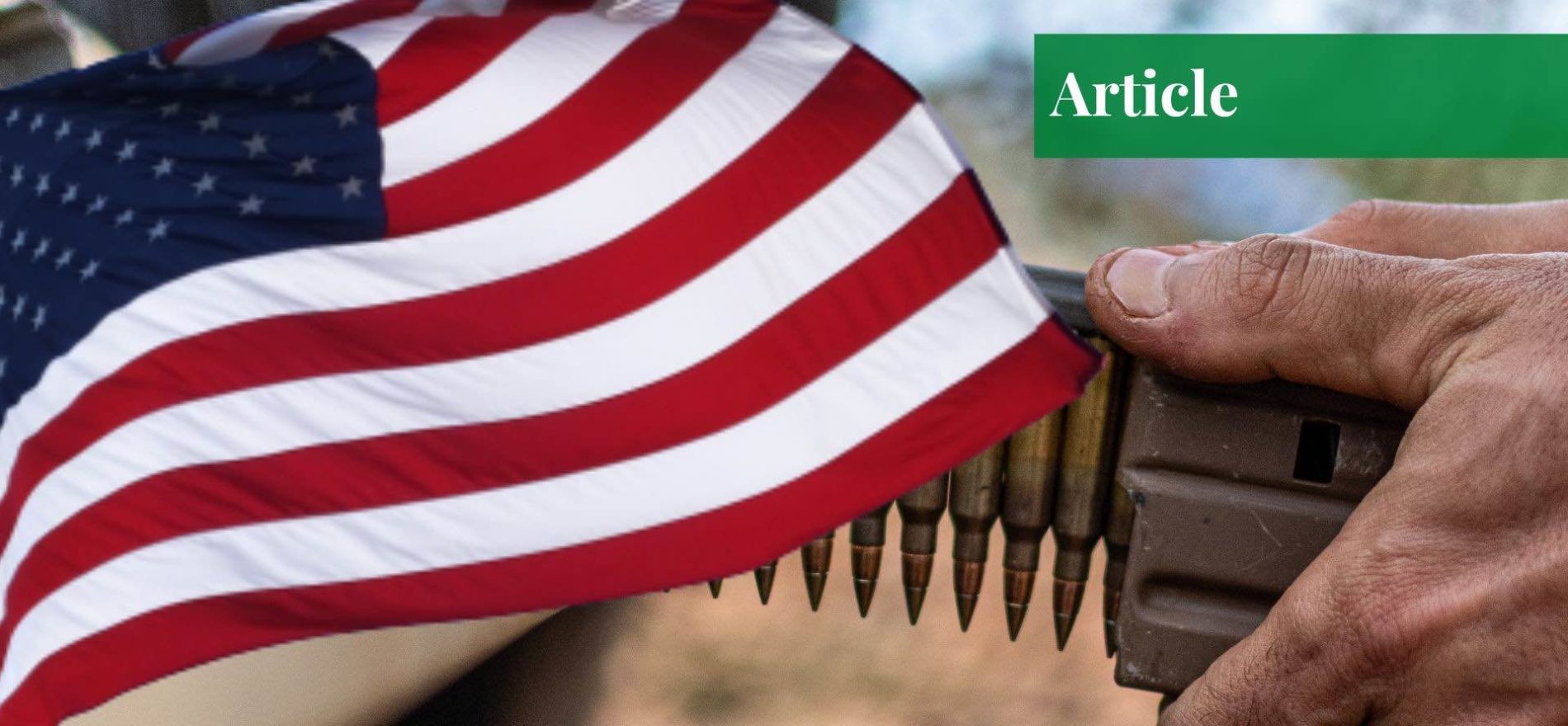Muhammad Azam Khan is an electronics engineer by profession and did his bachelor's from the Usman Institute of Technology. He is a freelance graphic designer and independent blogger who mostly writes on current affairs and women's issues. He has a keen interest in national and international politics.
Introduction
After observing the mounting threat of Russia’s invasion, the US, on Sunday 24th April 2022, announced the need for an emergency sale of ammunition worth $165 million to Ukraine through Foreign Military Sales (FMS). Arms sales have played an essential role in the world dominance of the US. From 2002 to 2016, it delivered $197 billion in weapons to 167 states worldwide.
Around $1 billion worth of arms were sold to thirty-two countries, and half of the US arms sales went to the Middle East, where Saudi Arabia alone accounts for twenty-four percent of total US arms exports. The dominance of America’s international arms sales has a deep historical connection with its economic recessions and growth.
US Arms Foreign Policy
There are three arguments related to the arms foreign policy of America. The first explains that arms sales help strengthen the military capabilities of its allies against regional adversaries and promote stability. Others say that America exerts its influence over the policies of its client states through arms export. A final lot of debaters claim that arms sale creates an economic upswing and strengthens the US ordnance industries.
America’s evolution in arms sales is divided into three phases throughout history. The first phase began in the wake of World War I and World War II when the US began selling arms to allied countries. The second phase started with the rise of the bipolar world and Cold War tension between America and the Soviet Union. America sold arms to European countries to stop the Soviet Union under its containment policy.
The last phase began under G.W. Bush Jr.’s era, after the September 11 attacks. During the War on Terror, the US provided billions worth of ammunition against the Taliban and Al-Qaida. Moreover, the US has used its arms sale strategy to create influence and regional balance through arsenal sales to North Atlantic Treaty Organization (NATO) states and India.

America’s Arms Evolution
In the forthcoming paragraphs, the history of America’s arms evolution is discussed in three major phases.
Phase I
The first phase began with the arms sales after World War I. However, it was not until after World War II that the United States conducted arms transfers on a large scale. The United States, despite its declaration of neutrality (August 1914–1917), rapidly emerged as the leading participant in the international ammunition trade, exporting $2.2 billion in war supplies to Europe and accounting for 52% of global arms exports during World War I.
The Great Depression followed World War I. Roosevelt’s New Deal, along with the US refusal to participate in the St. Germain Convention for the Control of the Trade in Arms and Ammunition (1919) and the Geneva Convention for the Supervision of the International Trade in Arms and Ammunition and in Implements of War (1925), led in the increase of the production of arms and helped the country improve the economy and provide thousands of jobs. In WWII, Roosevelt’s Lend-Lease Act allowed the transfer of US arms to friendly countries against rising Nazi power.
Phase II
The second phase started with the dawn of the Cold War and the passage of the American Export Controls Act (AECA), which gave the President of the United States the authority to control the import and export of defense arms and services. Due to the rise in Cold War tension, the federal investment in research and development of modern systems increased, as did international demand for American weapons.
American arms sales became a crucial strategy in the containment of the Soviet Union and preventing it from invading Western Europe. The Cold War contributed to the period of “The Great Inflation,” which took place between 1965 and 1982.
To overcome the inflation, the United States expanded its customer base well beyond Cold War boundaries by providing arsenal sales to Third World countries, making it a vital arm supplier in the Persian Gulf War. The Clinton administration approved a record $36 billion in sales, contributing 72 percent share of the Third World arms market.
Phase III
The third phase started in the wake of the 9/11 attacks; the United States sold weapons to Afghanistan and Iraq to increase their ability against the Taliban, Al Qaeda, and the Islamic State. In response to the attacks, the George W. Bush and Obama administrations oversaw a boom in arms sales, providing the foreign governments unprecedented access to the American arsenal.

The sale of arms in the first decade of the twenty-first century helped America control the impact of the Great Recession as arms sales boosted the ordnance industry. Since 9/11, the United States has delivered more than $197 billion worth of weapons to 167 countries.
The second decade started with Arab Spring and the Russia-Ukraine conflict over Crimea, allowing America to sell weapons to NATO allies and the Arab world. According to the 2017 data of the US Defense Security Cooperation Agency, the value of US Foreign Military Sales agreements surged to seventy billion dollars.
Furthermore, the Trump administration notified Congress in November 2021 that it had approved the sale of more than $23bn in advanced weapons systems, including F-35 fighter jets and armed drones, to the UAE against the war in Yemen. This arsenal sale helped the US provide 40,000 jobs, as stated by Donald Trump.
In the Sino-US Cold War tension, the US has made India its strategic partner to balance against China and counter China’s mounting influence in the South-China Sea. Through Basic Exchange and Cooperation Agreement (BECA), America will provide geospatial intelligence to India that will enhance its military capabilities against China.
The US also aligned Australia, Japan, and India to form the Quadrilateral Security Dialogue or QUAD to increase its influence in the Indo-Pacific Ocean against China. Moreover, the United States has approved a $100 million sale of military equipment to Taiwan to improve security and maintain stability in the region.
Conclusion
The US has used the arms sales strategy to influence human rights policies and conflicts, gain access to military bases and maintain global hegemony. It has sold weapons to NATO allies to contain Russia. As a part of the US policy of containment against China, America has signed military pacts like BECA with India to counter China on land. Whereas, QUAD and AUKUS focus on countering China in the South China Sea.
These engagements help America build bilateral ties and create strong incentives for recipient countries to maintain good relations with the United States. It also helps create job opportunities to battle recessions due to disasters like Covid-19 at home. However, this arms race has impinged a detrimental impact around the world and within the borders of America that needs to be addressed at all levels.
If you want to submit your articles, research papers, and book reviews, please check the Submissions page.
The views and opinions expressed in this article/paper are the author’s own and do not necessarily reflect the editorial position of Paradigm Shift.



















